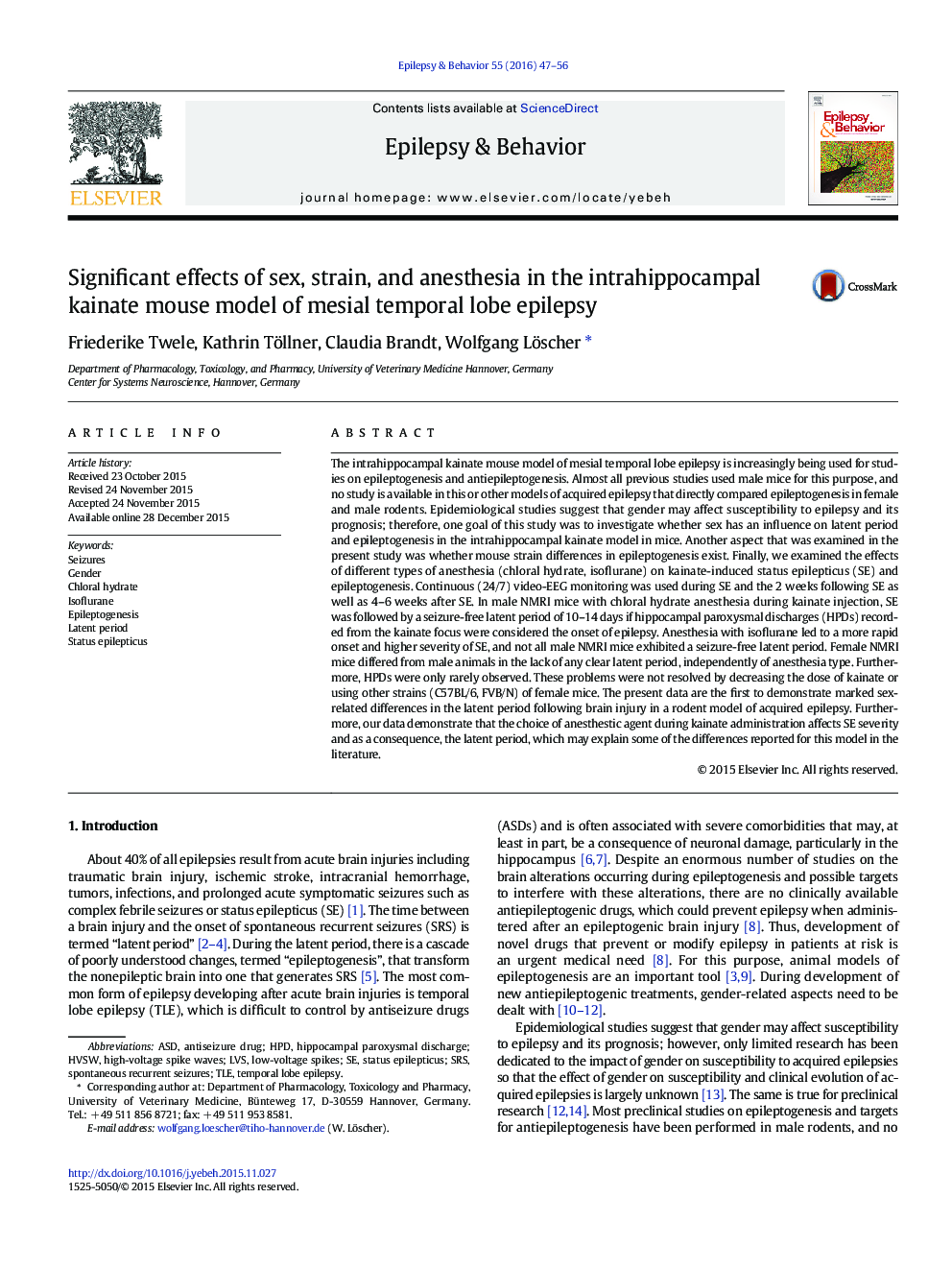| کد مقاله | کد نشریه | سال انتشار | مقاله انگلیسی | نسخه تمام متن |
|---|---|---|---|---|
| 6010675 | 1579835 | 2016 | 10 صفحه PDF | دانلود رایگان |
- Epidemiological studies suggest that gender may affect susceptibility to epilepsy.
- However, only limited clinical or preclinical research is available in this respect.
- Here, marked sex differences in the intrahippocampal kainate mouse model are reported.
- In contrast to males, females did not exhibit any latent period after status epilepticus.
- Furthermore, mouse strain and anesthesia were found to affect this model.
The intrahippocampal kainate mouse model of mesial temporal lobe epilepsy is increasingly being used for studies on epileptogenesis and antiepileptogenesis. Almost all previous studies used male mice for this purpose, and no study is available in this or other models of acquired epilepsy that directly compared epileptogenesis in female and male rodents. Epidemiological studies suggest that gender may affect susceptibility to epilepsy and its prognosis; therefore, one goal of this study was to investigate whether sex has an influence on latent period and epileptogenesis in the intrahippocampal kainate model in mice. Another aspect that was examined in the present study was whether mouse strain differences in epileptogenesis exist. Finally, we examined the effects of different types of anesthesia (chloral hydrate, isoflurane) on kainate-induced status epilepticus (SE) and epileptogenesis. Continuous (24/7) video-EEG monitoring was used during SE and the 2Â weeks following SE as well as 4-6Â weeks after SE. In male NMRI mice with chloral hydrate anesthesia during kainate injection, SE was followed by a seizure-free latent period of 10-14Â days if hippocampal paroxysmal discharges (HPDs) recorded from the kainate focus were considered the onset of epilepsy. Anesthesia with isoflurane led to a more rapid onset and higher severity of SE, and not all male NMRI mice exhibited a seizure-free latent period. Female NMRI mice differed from male animals in the lack of any clear latent period, independently of anesthesia type. Furthermore, HPDs were only rarely observed. These problems were not resolved by decreasing the dose of kainate or using other strains (C57BL/6, FVB/N) of female mice. The present data are the first to demonstrate marked sex-related differences in the latent period following brain injury in a rodent model of acquired epilepsy. Furthermore, our data demonstrate that the choice of anesthestic agent during kainate administration affects SE severity and as a consequence, the latent period, which may explain some of the differences reported for this model in the literature.
Journal: Epilepsy & Behavior - Volume 55, February 2016, Pages 47-56
